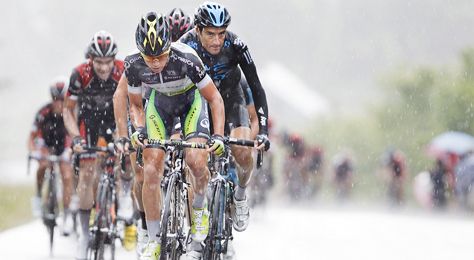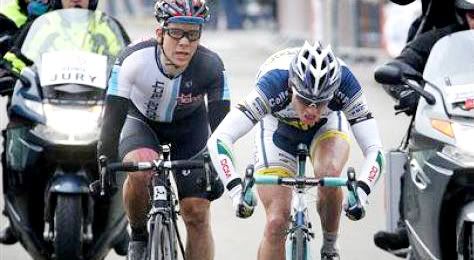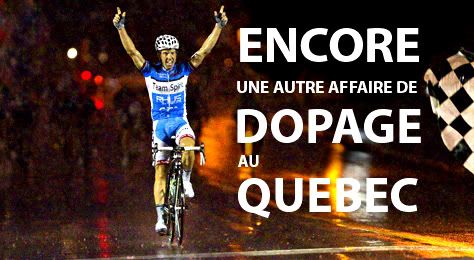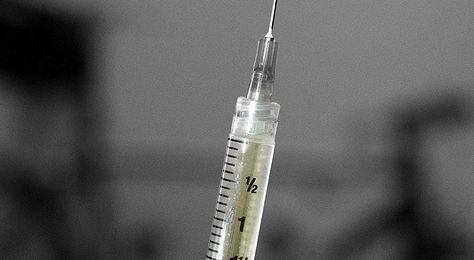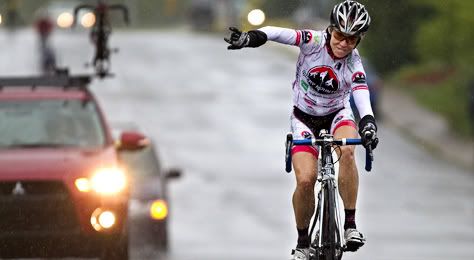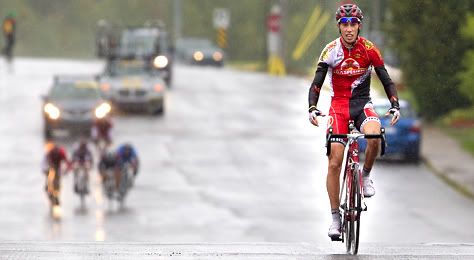Dying to Win
by Pasquale Stalteri
_________________________________________
 |
| Dying to win © Pasquale Stalteri |
Since posting my
original article claiming that drugs are an integral part of professional cycling, I received a lot of messages claiming the contrary. Perhaps some of the recent drug admissions prove my point but many will still argue that these are just isolated incidents.
Many athletes approached me with very defensive tones which immediately raised a red flag while others were simply inquisitive.
But some went as far as to call me a "dumb photographer" and suggested that I stick to topics I know about, namely photography. Which I chose to take in stride as a compliment towards my photography work.
For the latter, I would like to point out that prior to becoming a professional photographer, I spent 15 years of my life as an athletic trainer and having worked with many amateur and professional athletes, I stand behind my earlier statements.
In the words of former WADA (World Anti Doping Agency) president Dick Pound " "It is very hard to quantify the scale of the (drugs cheating) problem. Some countries understand the problem, but don't know how to go about solving it. Some are still trying to pretend there is no problem."
And to get an even better perspective of the problem, in 2005 Interpol estimated the trade of performance enhancing drugs to be approximately $19 billion dollars worldwide. Considering the fact that elite athletes make up such a small portion of society, this is too significant an amount to dismiss as "it can't be happening here".
While the recent positive drug tests of (presently two) prominent Quebec cyclists comes as a surprise to most, it comes as a welcome relief to others. Having some insight into what has been escalating behind the scenes in our beautiful sport, I am not surprised and would have actually expected many more.
And while these elite athletes serve 2 year bans, there are numerous others that will continue racing undetected and serve as role models within their tight knit groups of fellow users.
The Grim Reality and Why Athletes are Dying to Win
Performance enhancing agents are unlike recreational drugs in the sense that they are easily kept secret from friends and family and users characteristically do not reveal their secret unless they are caught red handed.
For those who are completely naïve to drug use in cycling, let me shed some light on the subject. In certain circles, drugs are considered part of the equipment such as wheels or tires and are therefore referred to as "gear". And like equipment, some race using Shimano or SRAM or Campagnolo, while some use other combinations and at the end of the day, regardless of preference, it all gets the job done. And although some are more reliable than others, as long as you know what to expect, it's all good.
The difference being that drugs will likely ruin your health. So why do athletes willingly choose to gamble with their long term health for the chance of winning a plastic trophy and a few moments of glory?
Simply put, the positive physical and psychological effects of the drugs are such that it's difficult for athletes to comprehend how something which makes them feel so strong and powerful can also be causing irreparable damage.
Anabolic Steroids
When used in the off season combined with the proper weight training regimen, steroids can significantly increase muscular strength and power while also dramatically speeding up recovery times thus allowing for more intense training sessions more often yielding faster results.
Steroids also increase insulin sensitivity allowing working muscles to replenish depleted glycogen stores more efficiently and when combined with a high carb diet and insulin injections, allow muscles to hold additional glycogen which can in turn be used to train harder and for extended periods of time. Fuller muscles also hold more water making dehydration less of an issue on prolonged intense training rides.
A reasonable percentage of off season strength and power can then be maintained long after the drugs are reduced or discontinued during the racing season. Red blood cell mass will also remain elevated for months after anabolic agents are discontinued.
To quote Dr. Michael Colgan "Given two athletes with the same fitness level, the stronger one will always prevail".
Steroids increase red blood cell mass and although not as dramatically as EPO, combining the two allows for micro doses of each to work synergistically and quite effectively while lowering the risk of detection.
During the racing season, fast acting anabolic steroids which are in and out of the system without a trace are chosen over their safer counterparts due to drug testing issues. Athletes who get caught for using fast acting steroids are simply consuming dosages which are too large to clear the system regardless of the fast acting effects. The same can be said of most athletes testing positive for EPO.
Side Effects
Erythropoietin
EPO is arguably the most dangerous drug in sport but because it is so easily attainable it also tends to be the most misused and or abused, in spite of many athletes having suffered its deadly consequences.
To be blunt, EPO use can be fatal and when athletes first started experimenting with this drug, many died. Large doses of EPO can make the blood so thick that during sleep when the heart is pumping its slowest, the blood cannot pump through the arteries prompting a massive heart attack.
In order to avoid this, athletes then started using prescription blood thinners such as trade name Heparin in order to thin the blood following races and since drug testing wasn't completely up to date yet, Heparin made its way onto the list of banned substances along with various other blood thinners that were commonly used.
Later, markers in the EPO itself made it readily detectable but then underground labs and numerous companies began producing the drug marker free. Drug tests then started concentrating on elevated hematocrit levels but drug users found another rather simple way to beat the tests; plain detergent proved capable of completely destroying any traces of EPO from urine samples. The only draw back was that it also destroyed all naturally occurring Erythropoietin and so this raised red flags as well.
As the cat and mouse game continues, no method of use or testing has ever proven to be completely safe or foolproof although certain athletes are convinced that they are ahead of the game and that anyone who still gets caught using EPO is simply ill advised as to its optimal use for avoiding detection.
Side Effects
Growth Hormone
In spite of the lofty price tag and lavish claims, GH actually does very little on its own to boost athletic performance. But combining it with androgens seems to boost both substances effectiveness thus requiring less of each in order to achieve the desired effects. But since Growth Hormone and Insulin are antagonistic hormones, GH must often be countered with Insulin injections thus requiring regular blood sugar readings etc…
Due to its rejuvenating effects, GH is mostly used during the off season to help athletes recover from lingering injuries suffered during the competitive season.
Another drug which some male athletes use is HCG which provides a mild boost by elevating natural testosterone production and until recently was completely undetectable.
And the list goes on.
Of course there are also amphetamines, masking agents, masking techniques and a multitude of other stand alone and support products readily available and used by athletes but my objective was not to provide a "How To" manual on drug use but rather to provide some insight into the world of professional athletes which you may not have been aware of and why this is such a complex problem. A problem which many still believe to be non existent.
What is the Solution?
One immediate solution could be to subject athletes starting at intermediate levels to regular on and off season blood and or urine tests regardless of the costs, which can easily be added on to the price of obtaining a racing licence and or inscription fees etc…
Offenders could then be subjected to hefty fines in order to subsidize the drug cleanup program ....
But before we start brainstorming for workable solutions, we have to first admit that there's a problem.
In the weeks and months ahead, if and when the names of more Quebec riders are revealed as having tested positive for banned substances, I hope that once we get over the initial shock, that we finally begin to grasp the reality and magnitude of this crisis and look for practical solutions rather than continuing to look away.
As I stated in my
original article, making examples of individuals who get caught and wanting to believe that they are part of the few rather than the many is a naïve attempt to fix a complex and growing problem which needs immediate attention.
Pasquale Stalteri
Related Articles:







